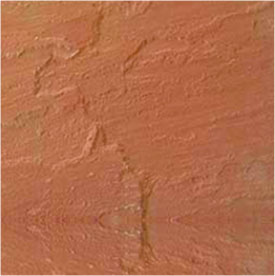Marble Facades – Restoring Marble’s Glory
June 17, 2022 AdminMarble has been utilized for the most iconic structures of the world, from temples to bathhouses to markets, in ancient Greece and Rome. Quarrying and transporting the marble, as well as the craftsmanship of shaping and fastening the enormous blocks, frequently formed the majority of building expenses. As labor costs rose, marble became reserved for the most socially significant structures, such as courthouses and municipal halls. Marble has become accessible as thin panel cladding as well as typical dimension stone as a result of technological developments in the previous half-century.

Marble and Its Properties

Marble is a metamorphic rock formed by the high heat and pressure alteration of limestone and other sedimentary carbonate rocks. Contrary to mica or slate, where differential stress forms cleavage lines, marble is non-foliated, allowing for extensive application in art and building.
Marble may be found in hundreds of distinct varieties throughout the world, including the United States, Europe, Egypt, and India. Impurities in the limestone shift and re-crystallize as the stone metamorphosed into marble, resulting in distinctive veins and color gradations.
The term “marble” can refer to a variety of geologic formulations in commercial uses, including real calcite and dolomite marbles, as well as travertine, serpentine, and hard limestone.
Reasons To Choose Marble Wall Cladding
There are numerous reasons that make marble the most sought-after material for wall cladding or façade designing.
- Superior strength – Being a metamorphic rock and made from limestone, marble exhibits supers strength and heat resistance
- A wider range of colors and patterns – Marble comes in almost all popular colors and patterns which means more design options for architects
- Singular material – Since it is formed out of a natural process, each slab of marble will possess a distinctive look
- Timeless – The passage of time has left no imprint on it, so it retains its natural appearance. When we compare it to other materials, we can find that marbles stay longer
- Diverse applications – It provides several decorative and construction options. It may be used both inside and outside
Stone Tolerance
The manufacturing tolerance for stone thickness and face dimensions are specified in BS 8298: 2000 and corresponds to European Standard BSEN 1469.
a) Units 50mm thick or less: the length and height measurements shall not differ by more than 2mm from those stated.
b) Units over 50mm thick: the length and height dimensions shall not differ by more than 3mm in 900mm from those stated.

Fixing Systems Design
The goal is to create safe and dependable cladding fastening, and thorough consideration at an early stage of the design process is critical. To meet construction tolerances, fixings must be three-dimensionally adjustable.
a) Permanent Dead Loads The actual weight of the supporting masonry, which can be conservatively estimated using a density of three tonnes per cubic meter. The stone may be displaced from the center of support in some circumstances, causing the dead weight to operate eccentrically on the fixings.
b) Transient Applied Loads Caused by wind pressure and section, window cleaning equipment, thermal and structural movements, and so on. A Structural Engineer will need to evaluate these loads.
Building Movement

Temperature, wind pressure and earthquake stresses all affect marble, sealant, concrete, and steel differently. The wall system will break under the stress of restricted mobility unless the marble facade design anticipates and adapts to these various degrees of change. A bond breaker, often a polyethylene sheet or foam pad, may be put between marble panels and concrete backup to enhance tolerance for this differential movement.
Similarly, drill kerfs and holes slightly bigger than the anchor to allow for movement at anchor locations. To ensure water tightness, this anchoring area was frequently filled with epoxy in the past. Epoxies, on the other hand, limit shear movement, which can cause the marble cladding or marble facades to shatter. Instead, use rubber grommets or flexible sealants to balance the demand for water protection with the necessity for flexibility.
Popular Indian Marble Options for Marble Facade
If you are an architect looking to prepare marble facades, it is necessary that you choose the right marble for your project. This is where Indian marble takes an edge due to its strong resistance capabilities.











